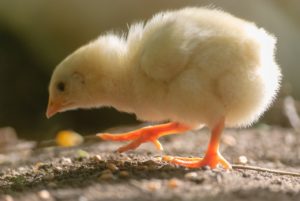Is My Chick a Boy or a Girl?
How to really tell
About
Our Feed
Poultry
Care Corner
Poultry
Products
Grains &
Simple Ingredients
Where
to Buy
How to Tell if a Baby Chick is Male or Female

Newborn chicks all look the same when they are hatched, so how do you know if they’ll grow up to be hens or roosters? Chicks purchased from a large hatchery are generally sold as sexed. That’s because they have specially trained people who can identify the subtle differences between males and females when they first hatch using vent sexing. Even if you purchased all pullets (females), you may end up with a rooster or two in the bunch because even the experts aren’t right all the time.
For those of us not trained in those arts, we can start distinguishing differences in male and female chicks at about 3 weeks of age. Here are some traits to help you do this.
Combs
Male chicks tend to start developing more prominent and darker combs. Make sure to compare chicks of the same breed—apples to apples—because comb size also varies by breed. For example, Marans hens have larger combs than Ameraucana roosters.
Saddle Feathers
Around 8-10 weeks, chicks start to grow saddle feathers which is where the back meets the base of the tail. Females have rounded saddle feathers, while males’ are more long and pointy.
Legs
Males will grow bigger legs and feet. Male chicks will often have a growth spurt and be all legs for a while, unlike their female companions.
Posture
Roosters often develop a more upright posture than hens, giving them a jauntier and more alert expression.
Crowing
Crowing usually doesn’t begin until males reach maturity, although they can start as early as 3 weeks in some cases! Crowing is the most obvious way to distinguish males from females. However, you should not determine if it is a hen or rooster based on crowing as some hens crow.
Hackle Feathers & Sickle Feathers
At 4 – 6 months old, hackle feathers will start to form on the neck and tail feathers. A male’s hackle feathers will be long and pointy, while a female’s will be round. Males will also grow sickle feathers, the long, curvy, upright feathers at the top of the tail. A female’s tail feathers will be more rounded, more uniform in size, and less “showy”.
Even if you are watching your chicks grow and mature, and you are so sure you have them all figured out, as you read above, some hens may crow and some roosters are “hen feathered,” and they all mature at their own speed. All we can do is use the aforementioned traits to make our best guess about the sex of our feathered friends.
